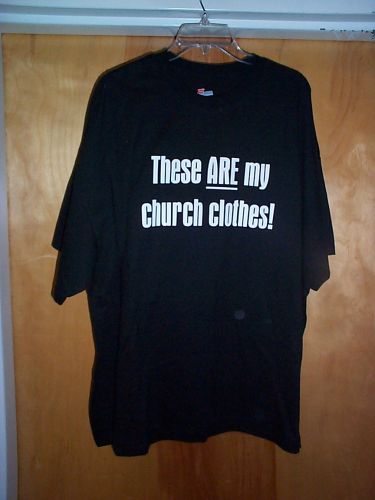
All this to say that I loved the way this Chicago Tribune report on church attire began:
Rev. David Moyer still remembers the gasp as the beautiful young bride came up the aisle.
"What was that about?" he wondered.
So Moyer, the conservative rector of Good Shepherd Episcopal Church in Rosemont, went ahead with the nuptials--quite unaware of how backless the bride's dress really was.
"It wasn't until I blessed them and they turned around that I looked down" and saw more of her backside than one usually sees, he recalled with a laugh.
Moyer said nothing at the time. But after years of watching wedding gowns grow skimpier and more revealing, he had had enough.
"I never thought I'd see the day," he said recently. "But I now tell couples in premarital counseling that their wedding clothes must be dignified and lovely."
The piece reminisces about what proper dress used to mean -- men in jackets, ties and shiny shoes and women in heels, dresses and hats. The reporter speaks with clergy who lament the change and those who think it's not a problem. The article has some great quotes and shows a nice breadth of reporting. It shows both cultural mores and theological implications of the way we dress.
My dad is a pastor who vicared in Imperial Beach, California, in the early 1970s. Apparently it was not unheard of for people to approach the communion rail in their beach gear. Sometimes this included some barely-there beachwear. It presented a bit of a pastoral challenge. Tony Campolo discussed a similar issue and how it was handled at his Baptist church:
Sitting on a couch in the tabernacle's modern vestibule, Campolo recalled the time a group of visiting teenagers from Canada showed up in T-shirts and jeans at the predominantly African-American Mount Carmel Baptist Church in West Philadelphia, where he worships.
"Well, the ushers turned them away," Campolo continued, "and the kids got all mad. They said, 'What, you don't let poor people in your church?'
"And the ushers said, 'Oh, we let poor people in. But you're not poor. We'll let you in when you come dressed with respect.' "
Rev. Joseph Ganiel, pastor of St. James parish in Ventnor, N.J., doesn't turn the underdressed away. But he has had it, he said, with tank tops and flip-flops and short shorts and naked navels.
The latter pastor actually posts a dress code in the parish bulletin. The story ends with the anecdote of a woman and her two teenage sons casually dressed at church, scoffing at the notion that God cares what they wear more than what's in their hearts. The various stories help show the difficult balancing act congregations have in promoting proper respect through attire while being welcoming of everyone.
Understanding the limited space the reporter had to work with, it might have been interesting to look a bit more at official or semi-official dress codes for certain religious groups. But it's just a really interesting topic with many perspectives.
